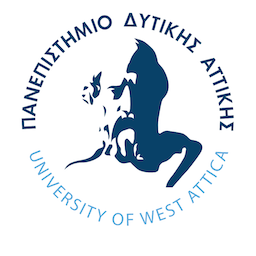Learning outcomes
Understanding semiology as a theoretical yet quite practical interpretative approach to the visual sign. Understanding the basic function of the sign – signification – as a dialectics between signifier and signified in order to be able to analyse rudimentary but also complex cultural processes, as they pertain to the image. Deliberation on the theoretical problematizations forwarded by semiology as a critical endeavour, so that the one may challenge or even determine the hermeneutical framework of a given semiological analysis.
General Competences
- Adapting to new situations.
- Decision-making.
- Working independently.
- Working in an interdisciplinary environment.
- Respect for difference and multiculturalism.
- Showing social, professional and ethical responsibility and sensitivity to gender issues.
- Criticism and self-criticism.
- Production of free, creative and inductive thinking.
Course Outline
Understanding the fundamental principles and structural elements of semiology. Semiology and the image. The semiological approach and its importance for the delineation and understanding of reality, as the latter is experienced as image and thus as sign. Consideration of the semiological construction as well as deconstruction of experience and of the corresponding ethics. Reflection on the position of the artist within contemporary culture, semiologically seen, as regards the possibility of producing creative output therein.
Besides an introduction to the core notions of semiology, the course includes a discussion of the breadth of the semiological approach and its multifaceted object. Discussion of the psychological, sociological, philosophical, political, aesthetical, and religious presuppositions of semiological theory as well as of their repercussion on the ensuing critique of the image. Assessment of a number of typical hermeneutical frameworks for the understanding of visual reality, focusing on the polarities of authenticity-representation, similarity-difference, truth-myth. The position(ing) of the artist within contemporary culture. Discussion of the semiological theory in relation to examples from the world of art, the media, and fashion.
RECOMMENDED BIBLIOGRAPHY
- Baldwin, Jonathan & Lucienne Roberts. Visual Communication. From Theory to Practice. Lausanne: AVA Publishing, 2006.
- Barthes, Roland. Camera Lucida. Reflexions on Photography. New York: MacMillan, 2010.
- Barthes, Roland. Critique et vérité. Paris: Éditions du Seuil, 1966.
- Barthes, Roland. Image – Music – Text. London: Fontana Press / Harper Collins Publishers, 1993.
- Barthes, Roland. L’aventure sémiologique. Paris: Points, 2015.
- Freud, Sigmund. The Interpretation of Dreams. London: Penguin Books, 1991.
- Plato. Cratylus. Cambridge, Massachusetts: Harvard University Press, 2002.
- Ricoeur, Paul. The Rule of Metaphor. The Creation of Meaning in Language. London: Routledge, 2003.
- Saussure, Ferdinand de. Course in General Linguistics. New York: Columbia University Press, 2011.


